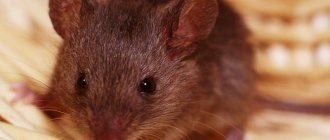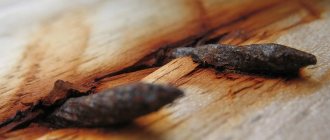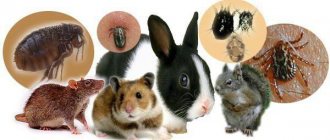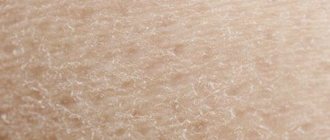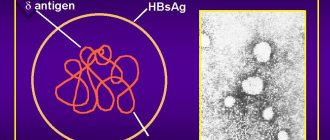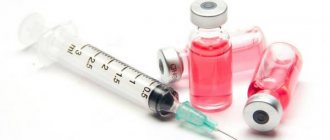Taeniasis is a parasitic infection caused by parasitic microorganisms, which disrupts the functioning of the gastrointestinal tract. Taeniasis is easy to get infected by eating meat, but getting rid of the disease is not so easy - the parasites spread throughout the body very quickly.
Taeniasis is easy to get infected by eating meat, but getting rid of the disease is not so easy - the parasites spread throughout the body very quickly.
What is taeniasis?
Taeniasis is the name given to an intestinal parasitic infection caused by a pork tapeworm (tapeworm). The disease belongs to the group of cestodiases, characterized by the sequential development of the parasite with a change of host, that is:
- a Finn larva emerges from the egg - this occurs in the body of an animal, which is considered to be an intermediate host;
- Once it enters the human body (first into the stomach and then into the intestines), the finna turns into an adult worm and finds a permanent host.
It also happens that the human body can become an intermediate host. This happens when parasitic larvae enter the human blood, which spread to various organs. This mechanism of infection is called cysticercosis . This extraintestinal disease can affect skeletal muscles, lungs, brain, skin and eyes.
Infection with taeniasis occurs when eating pig meat , which has not been subjected to appropriate heat treatment and contains cysticercus larvae of a parasitic microorganism. Once in the body of the final host, the cysticercus penetrates the mucous membrane of the small intestine and begins its development. In this case, a person becomes potentially dangerous, since he can infect others and himself with cysticercosis, which is difficult to treat. The differences between taeniasis and cysticercosis are that the latter is a complication of a parasitic infection and can spread throughout the body.
ATTENTION! Pork tapeworm larvae, despite their name, can also live not only in pigs, but also in the meat of rabbits, camels and dogs.
The disease is extremely widespread, but quite uneven. In countries where pork consumption is kept to a minimum, taeniasis practically does not occur, and in areas with developed extensive pig farming, the infection rate of livestock is quite high. The main foci of parasitic infection are African (Zaire, Nigeria, Cameroon), Latin American (Mexico, Colombia, Nicaragua, El Salvador, Honduras) and Asian (North China, India, South Korea) territories.
Characteristics of the pathogen
Yersiniosis is caused by the bacterium Yersinia enterocolitica, a motile gram-negative facultative anaerobic bacillus. Yersinias tolerate low temperatures well; in the refrigerator at 4-6 °C they can not only survive, but also multiply on food. (Yersiniosis is often called “refrigerator disease”). Bacteria easily tolerate freezing and subsequent thawing, persist for a long time in water and soil, but are sensitive to sunlight, drying, boiling and chemical disinfectants. Yersinia produces enterotoxin, cytotoxins and endotoxin.
The reservoir and source of yersiniosis are mainly animals: various rodents, livestock (mainly pigs), dogs. People can spread the infection, but transmission from humans is quite rare. In cities, the infection is mainly spread by rodents; it is their clusters that form epidemic foci of infection during outbreak periods. Yersiniosis is transmitted through the fecal-oral mechanism through food and water. Food products of animal origin that are insufficiently thermally processed, water sources contaminated with the excrement of sick animals, contribute to the implementation of infection routes. In rare cases, contact-household transmission occurs (as a rule, it is associated with poor hygienic culture).
We suggest you read: Routes of infection and symptoms of genital herpes in children
The natural susceptibility of humans to yersiniosis is low. Healthy people practically do not develop clinical forms of infection. A severe and manifest course is typical for children, people suffering from immunodeficiency conditions, and chronic diseases that contribute to a pronounced weakening of the body’s protective properties. Epidemic outbreaks of yersiniosis are quite rare and most often occur with the massive consumption of vegetables contaminated with microbes.
Symptoms of taeniasis
The symptoms of the presence of pork tapeworm in the body are quite varied. It also happens that the signs of the disease are so insignificant that they are simply not paid attention to. Intestinal teniasis is characterized by the following symptoms:
- inflammatory bowel diseases;
- nausea and vomiting;
- rapid weight loss;
- lack of appetite;
- diarrhea or, conversely, constipation;
- stomach ache;
- dizziness and weakness;
- fast fatiguability;
- insomnia;
- itching in the anus;
- anemia (rare).
If an adult pork tapeworm is present in the body, particles of the parasite or its eggs may be present in the stool of an infected person - this is the most common symptom by which people learn about the presence of the pathogen.
Sometimes the parasite does not make itself felt for quite a long time, taeniasis proceeds without visible signs, and the presence of the parasite in the body is revealed only when tests are taken.
Signs of infection with bovine and pork tapeworm
Nervous symptoms develop reflexively: dizziness, headache, weakness, decreased ability to work, apathy, irritability.
With teniahrynchiasis, patients often consult a doctor with complaints of only one symptom - an unpleasant sensation due to segments of the bovine tapeworm crawling across the body, periodically actively discharged from the anus.
| Photo. Eggs and segments of bovine and pork tapeworms: Eggs are spherical; their shell is transparent, very delicate, with one or two processes in the form of threads (filaments). Inside the egg there is an oncosphere embryo with a thick, radially striated dark brown shell and six embryonic hooks. The size of the oncosphere is 31x40 microns. | ||
Treatment
Treatment of taeniosis is carried out exclusively in hospital settings, since there is a danger of developing cysticercosis.
Medications
Antihelminthic drugs cannot be used to treat taeniasis the intestines will begin to digest the dead parasite, and its eggs with oncospheres can get onto the mucous membrane or penetrate into its wall and, subsequently, following the blood duct, get to various organs .
The most effective and safe are drugs that paralyze the muscles of the helminth. This effect on the pork tapeworm leads to its immobilization, which facilitates the unhindered removal of the parasite from the intestine naturally. Among the drugs that have a similar effect are:
- Praziquantel derivatives;
- Niclosamide;
- Antimonyl sodium tartrate;
- Ditrazine citrate;
- Chloxyl.
After consuming the antiparasitic drug, after some time (usually 1-3 hours), it is necessary to take a saline laxative to remove the immobilized pork tapeworm through the rectum.
ATTENTION! Drug therapy for taeniasis is considered effective if the parasite comes out along with the head-scolex. In its absence, it is too early to talk about victory over the pork tapeworm - very soon new segments will grow from the head, and the worm will continue its development in the intestines. Under such circumstances, it is possible to start a new course of treatment only after a month.
Folk remedies
Treatment of taeniasis with folk remedies is justified only in cases where the infected person cannot take medications for any good reason. Before self-medication, it is necessary to take a set of measures:
- You must adhere to a special diet for two days (table No. 13);
- the day before you should take a saline laxative;
- It is recommended to use folk remedies exclusively on an empty stomach.
To get rid of the parasite, use:
- Pumpkin seeds - contain cucurbitin, which paralyzes the muscles of the helminth, after which the immobilized pork tapeworm quickly dies. Treatment with seeds is as follows: in the evening, 500 grams of the product must be filled with water (the seeds must be covered with water) and placed in a water bath for two hours. The next day, consume all the seeds along with the decoction. After three hours, it is recommended to take a saline laxative, and after another 30 minutes, use an enema. After the procedures, the helminth will freely leave the body.
- Male fern extract is rich in phenolic compounds that can immobilize the pork tapeworm, after which its death occurs. The required dose of the drug is calculated based on the age and weight of the infected person, in accordance with the generally accepted doses indicated in pharmaceutical reference books.
- Chanterelles . Mushrooms contain D-mannose. This substance belongs to the group of polysaccharides and has the ability to penetrate the membrane, blocking the nerve endings of the parasite. Once immobilized, the pork tapeworm quickly dies and leaves the body naturally.
IMPORTANT! The value of chanterelles is also that they are able to kill helminth eggs and larvae, due to which they are successfully used to prevent the occurrence of taeniasis.
When self-medicating a parasitic disease, it is important to remember that such measures, although they get rid of the parasite, have a fairly high risk of re-infection. It, in turn, is very painful and sometimes leads to death.
What tests need to be taken?
The main method of laboratory diagnosis is the examination of stool for worm eggs. In this case, the sample is taken in the morning, without preliminary treatment of the perianal area. It is recommended to repeat the test three times, although the test result is considered positive from the first sample in which eggs were found. Negative results are considered reliable if no signs of helminthiasis were found in any sample. If necessary, stool analysis can be replaced by scraping from the peri-anal area, but the information content of this method is somewhat lower.
Differential diagnosis of taeniosis is carried out with teniarhynchosis. The segments of both parasites are almost identical in appearance. To distinguish them, detected samples are examined under high magnification. What matters is the number of lateral branches, which in the pork tapeworm segments does not exceed 12, in the bovine tapeworm - 32.
Diagnosis of cysticercosis requires an integrated approach using techniques such as MRI, CT, craniography, ultrasound, etc. The choice of research method depends on the expected location of the cysticercus and the existing symptoms. To confirm the diagnosis, serological laboratory methods for detecting antibodies to pork tapeworm toxins (ELISA) can be used. The main diseases with which cysticercosis is differentiated are tumors and echinococcosis.
Note: with cysticircosis, the patient is also examined for the presence of a sexually mature helminth in the body. This is necessary to prevent autoinfestations.
Treatment of taeniasis
Treatment of taeniasis is recommended in a hospital setting. This is necessary to fully monitor the patient’s condition and prevent vomiting, which can lead to autoinvasion and the development of cysticercosis. In addition to traditional medicines, traditional medicine recipes can be included in the therapy. Drugs that act on the causative agent of the disease are: praziquantel, niclosamide, male fern extract.
Praziquantel
Broad-spectrum agent. Causes paralysis of the muscular layers of the helminth and destruction of its protective shell. Breakdown of the shell occurs only when high dosages of the drug are used and allows digestive enzymes to digest the worm.
Praziquantel is distributed in the form of white tablets with a dosage of 0.6 grams, placed in tinted glass bottles. Each tablet is enteric-coated, so you cannot chew the medicine while taking it.
For the intestinal form of taeniasis, the dose of the drug is 10-25 mg per 1 kg of body weight, regardless of the patient’s age. The drug is taken once. Two hours after its use, it is recommended to take a saline laxative to remove viable parasite segments from the intestines.
The dosage of the drug for cysticercosis is 50 mg/kg per day. In this case, the resulting amount of the drug is divided into 3 doses, the interval between which should be 4-6 hours. The course of treatment can last up to 4 days.
Praziquantel is not used for:
- pregnancy and lactation;
- the patient is less than 4 years old;
- ocular cysticercosis;
- liver diseases;
- individual intolerance.
In addition to other side effects (abdominal pain, sweating, headache, diarrhea), vomiting may occur during treatment with praziquantel. This phenomenon must be stopped by intramuscular or intravenous administration of metoclopramide.
Niclosamide
A drug that disrupts the process of absorption of nutrients in the parasite’s body. At the same time, its vital processes slow down, which leads to the death of the worm. Available in tablet form. Used for hymenolipedosis, teniarinchiasis, taeniasis, diphyllobothriasis.
The average course of treatment with niclosamide is four days. The tablets are thoroughly chewed or crushed by other methods before swallowing. The daily dose for adults and children over 12 years of age is 2-3 grams. For children from 5 to 12 years old - 1.5 grams, under 5 years old - 0.5-0.7 grams. If necessary, the doctor may change the dosage. The daily dose is taken in 1 dose, on an empty stomach.
Niclosamide is not prescribed for conditions such as:
- renal and liver failure;
- lactation, pregnancy;
- individual intolerance;
- stomach ulcer.
The drug is used with caution in elderly patients, in early childhood, and with anemia.
Male Fern Extract
Herbal anthelmintic agent. Used for hymenolepidosis, taeniasis, diphyllobothriasis. Does not apply to children under 2 years of age. The dosage of the drug for pork tapeworm infestation is 4-7 grams per day. The total dose is divided into 2-3 doses. The highest single dose that a doctor can set is 8 grams. The course of treatment is 1 day. Therapy is considered successful if parasite segments are not detected in stool tests after 3-5 examinations.
Treatment with male fern is contraindicated in case of liver or kidney failure, gastric ulcer, exhaustion, tuberculosis, pregnancy. During therapy, side effects such as dyspepsia, dizziness, headache, decompensation of cardiac pathology, and exacerbation of chronic liver diseases may occur.
Diagnostics
It is necessary to diagnose taeniasis as early as possible in order to begin getting rid of the worm in time and protect yourself from possible complications.
If you suspect the presence of pork tapeworm in your body, you should consult a parasitologist. A specialist, having studied the medical history and based on the symptoms, will be able to make a preliminary diagnosis. To confirm it, the following laboratory procedures may be prescribed:
- General blood analysis.
- Microscopic examination of stool. This procedure is extremely important because it allows you to identify taeniasis eggs under a microscope, but it is not always reliable - sometimes eggs with a similar structure belong to another helminth - the bovine tapeworm, which causes taeniahrhynchosis. To correctly diagnose the disease, such a study is repeated several times until helminth segments are found in the feces - they are different in pork and bovine tapeworms, so after microscopy the infection can be accurately diagnosed.
- Perianal scraping - used to detect annular segments.
- Enzymatic immunoassay - allows you to identify pork tapeworm antigens in the feces and blood of an infected person.
- Immunoelectrophoresis . By carrying out this procedure, there is a possibility of detecting antibodies to the parasite antigen. But there is a high chance of cross-reaction with antigens of other parasites, which makes diagnosis difficult.
- Coprogram.
- X-ray and copy.
Sometimes, to exclude diseases of the gastrointestinal tract of non-parasitic origin (cholecystitis, gastroenteritis, Crohn's disease), as well as the possibility of damage by other intestinal helminths, a thorough differential diagnosis is carried out.
Diagnostic measures
Teniosis is diagnosed by carrying out the following measures:
- Collecting an anamnesis, asking the patient about whether helminth segments come out along with the feces, which is what characterizes taeniasis.
- Macroscopic examination.
Diagnosing taeniasis can be quite difficult, since the oncospheres of pork tapeworm are practically no different from the oncospheres of bovine tapeworm. As a rule, the laboratory gives an answer about the presence of segments in the feces, without mentioning the type of helminth.
Species can only be determined after macroscopic examination of mature segments. After taeniasis has been identified, the doctor prescribes treatment for taeniasis.
Prevention
Teniasis is a rather insidious disease that is easier to prevent than to cure. To avoid infection with pork tapeworm, you must adhere to the following preventive measures:
- purchase pork only from specialized food establishments;
- if in doubt, request documents indicating the results of the veterinary and sanitary examination;
- carefully inspect the purchased meat for the presence of suspicious inclusions (cysticerci);
- eat only heat-treated products - the temperature inside the piece should exceed 80° for an hour;
- Long-term freezing can also kill tapeworms in raw meat and render the meat harmless - ten days is enough to destroy cysticerci;
- do not try raw meat product;
- Maintain personal hygiene – wash your hands after visiting the toilet;
- at the slightest suspicion of a disease, immediately consult a specialist.
By following simple measures to prevent taeniasis, you can protect yourself and your family from the parasitic disease.


